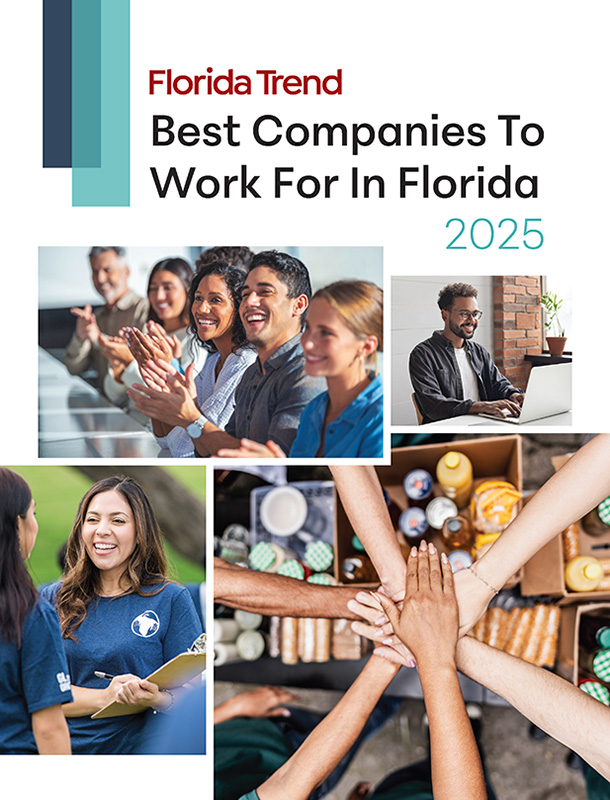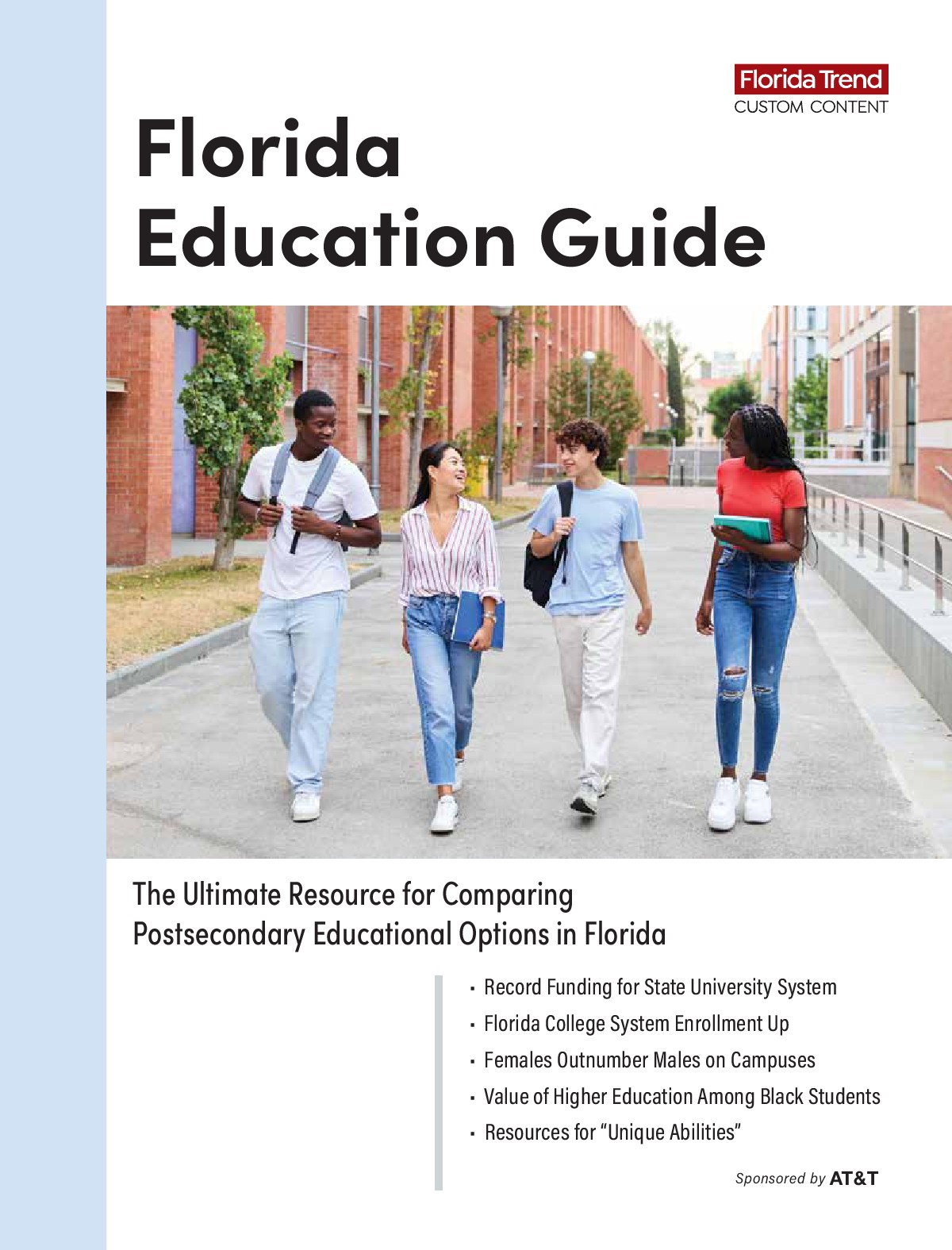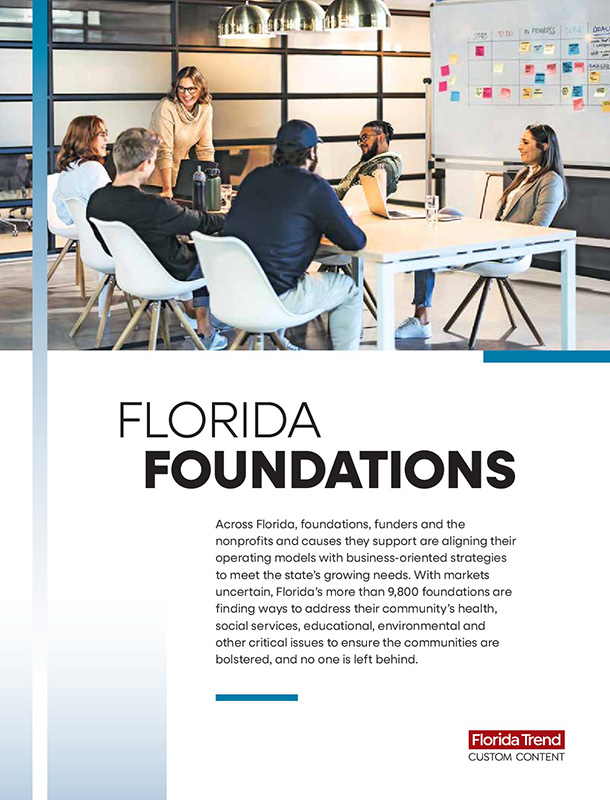In April, Dr. LuJean Waters was called for jury duty in Polk County. She was quickly excused. “The judge said that she recognized me from my television interview about the critical shortage of large animal veterinarians and she said, ‘I know you have somewhere more important to be,’” Waters says. “Later during a break in the jury selection, a man came up to me and said ‘I’m desperate to find a large animal vet, can I have your name and number?’ I get calls every night and I have to turn them down because I’m so busy already.”
As owner of Heartland Large Animal Services in Bartow, Waters, 43, has looked after cattle, horses and all manner of farm animals in Polk County for the past 12 years. When she established her practice, the largely rural area had a group of large animal veterinarians who served clients ranging from ranchers to horse breeders to individuals who kept one or two pleasure horses on their properties.
More recently, though, veteran large animal veterinarians have retired or concentrated their practices on caring for companion animals that moved into the state with their owners. Then the COVID-19 pandemic struck. “There was a rise in hobby farms, and that added to the demand for large animal veterinarians,” Waters points out.
Factor in Florida’s residential boom and the distance between ranches, farms and boarding barns created a perfect storm exacerbating the shortage of those who specialize in large animal medicine.
“It’s impossible to say how many clients I see a day because distance has made my job almost impossible,” she says. “I may have a call scheduled for one of my regular rancher clients, and I may have to treat or vaccinate 30 cows so I might only be there 30 minutes, but it takes me an hour and a half to get there. It is difficult.”
The strain also is putting Florida’s lucrative livestock industry in jeopardy. The U.S. Department of Agriculture, which tracks “food animal” veterinary shortages across the state and nation, reports that shortages in several Florida regions means that “many farms and ranches, particularly smaller operations, will not have access to veterinary services.” And if vets can’t be found, animals simply won’t get the care they need, greater numbers will get sick and die, and producers will face increased production and economic losses, the USDA warns.
According to the University of Florida’s Institute of Food and Agricultural Sciences, a partnership between federal, state and county governments and UF extension offices focused on research connected to agriculture and natural resources around the state, Florida’s livestock industry represents more than $1.5 billion of the state’s annual economy.
Florida’s dairy, equine, goat, poultry and swine industries — as well as operations where rabbits, sheep, emu and llamas are raised for their meat, skin and other products — figure significantly in that number, but the state’s beef cattle industry represents the largest chunk with a total breeding herd valued at about $847 million and an annual calf crop estimated at more than $400 million.
“Florida is a cow/calf state, and that means we breed calves to be sent out west to be fattened up,” says Jim Handley, executive vice president of the Florida Cattlemen’s Association. “We have the ninth-largest brood cattle herd and the ninth-largest beef cattle herd in the country.”
He acknowledges that caring for the state’s herd is no easy task. “There’s a lot of blood, sweat and tears,” Handley says. “Large animal veterinarians are working in the heat and the mud and in the rain, and you’re working in pens with 1,500 cows and pens full of bulls who are like a bus full of teenage boys. It’s much easier for a small animal veterinarian who’s working in an air-conditioned environment, holding a dog on an examination table and administering a vaccination.”
Dr. Taylor McLendon learned that pretty quickly when she tried to recruit an associate to work in her St. Augustine equine medicine practice, Mandarin Equine Veterinary Solutions. McLendon, 32, who graduated from the UF College of Veterinary Medicine in 2019, purchased the practice in 2022. Nearly immediately she needed to add associates to serve the practice’s client list. “I closed on the practice in July and the founder of the practice retired and an associate went into small animal practice,” she recalls. “In July 2022, I began recruiting for an associate, and it was not until October 2023 that Sarah Randell joined the practice as a general practitioner.”
These days, McLendon has added services such as routine equine dental care, acupuncture and chiropractic care to her practice rather than increase her client list — and she frequently finds herself turning potential patients away. “I get calls for new business all the time, but I have to turn them down because I don’t have the time to cover all cases,” says McLendon who specializes in treating sport and performance horses. “People who have one or two horses in their backyard for pleasure are the hardest hit because those are the clients that we have to turn down.”
Meanwhile, Florida’s cattle and equine ranch operators are coping by performing some routine tasks such as worming or palpating animals to confirm that a breeding procedure has “taken.”
Others are taking a more communal route. “Some dairy farms have consolidated, and larger cattle farms, three or four farms are getting together and hiring a large animal veterinarian to be on staff,” Handley says.
However they’re coping, it’s a temporary fix, says Dr. Hal Phillips, the owner and operator of Phillips Ranch in Morriston, which has nearly 1,200 breeding age beef cattle and produces approximately 1,000 calves annually.
Phillips himself is an equine veterinarian turned cattle rancher. These days, as more cattle ranchers rely on fewer large animal vets to manage their operations, he says that convincing people to enter large animal medicine is key.
There are about 1,969 people competing for 150 seats in the UF vet school. “In some cases, they say they intend to be large animal vets to get into the (vet) school, but they change (their focus) to small animal medicine,” he says.
It’s critical, he says, to make sure that young people who “have the heart” to practice large animal medicine get seats at the veterinary school table. Among those admitted should be those with rural backgrounds who may not have perfect scholastic records.
“The solution to the large animal shortage is to bring students who may not have a 4.0 grade point average but who have grown up on a farm and are familiar with what it takes to be a large animal veterinarian,” Phillips says. “It’s 24/7, and they probably won’t make as much money as they would in small animal practice, but you have to find the people who have the heart to do it.”
UF is encouraging students to choose large animal medicine by offering five equine recruiting scholarships to incoming veterinary students to reduce their educational debt for the first year of their veterinary program. “Scholarship opportunities to reduce student debt load may help encourage students to enter into large animal practice, as the starting salaries are lower than for companion animal (veterinarians),” says Dr. Amanda M. House, the associate dean of academic and student affairs for the UF College of Veterinary Medicine in Gainesville and a professor of large animal clinical sciences.
Many large animal vets like Dr. Joseph Guevara, who has a practice called On the Hoof Veterinary Services in north Gainesville, are also doing their part to mentor new generations of large animal doctors.
“It’s demanding work and it’s not for the faint of heart,” Guevara says, “but I work with between two and four students every year in an externship program with UF, and in the end, about 50% of them go on to practice large animal medicine, and about 50% will work with small animals but don’t mind seeing a cow or horse that is trailered in.”
Hannah Quail, a UF veterinary student, knows she will take the large animal medicine route. She credits her participation in equestrian sports with piquing her interest in equine medicine.
“I was 11 years old riding dressage and eventing in Michigan and spending a lot of time working at the barn to help pay for riding lessons,” Quail, now 25, recalls. “I watched the veterinarians when they would come to treat the horses, asked lots of questions and became fascinated with large animal medicine, and later a veterinarian who practiced equine dentistry came to the barn; and I began working with her, and she became my mentor.”
She believes that Florida’s shortage of large animal veterinarians stems from tales that have circulated in the industry for years.
“I think that (it) came from the way large animal practices used to be — horror stories that older vets told students — ‘internships are hard to get, it’s a hard way of life, you’ll work long hours, you’ll make less money than companion animal vets,’” Quail claims. “But most of the vets in practice now have a different outlook. They are managing the internships, and other things. Also, my instructors have been very enthusiastic, and it makes a difference when someone is passionate about something.”
After she gets her degree, Quail plans to stay in academia to practice large animal medicine and do some research, too.
“I want to do research, but I spent so much time in school to become an equine vet that I want to be able to treat horses — to have a clinical practice (because) it’s interesting to see how the research is applied in the clinical practice,” she says.
For now, Quail is a teaching assistant instructing prospective veterinarians about equine anatomy and sharing a special message as well.
“Most people have had a dog or a cat — but horses are large animals, and so I tell them you don’t have to be a horse person to be an equine veterinarian,” she says. “I tell them to be open-minded. You never know.”
Whether or not they take Quail’s advice, Guevara believes finding a long-term solution to the shortage is critical and not just to the cattle industry in the state, but to all Floridians. “It’s important,” he says. “Not only is it people’s livelihoods, but it’s our food as well.”












